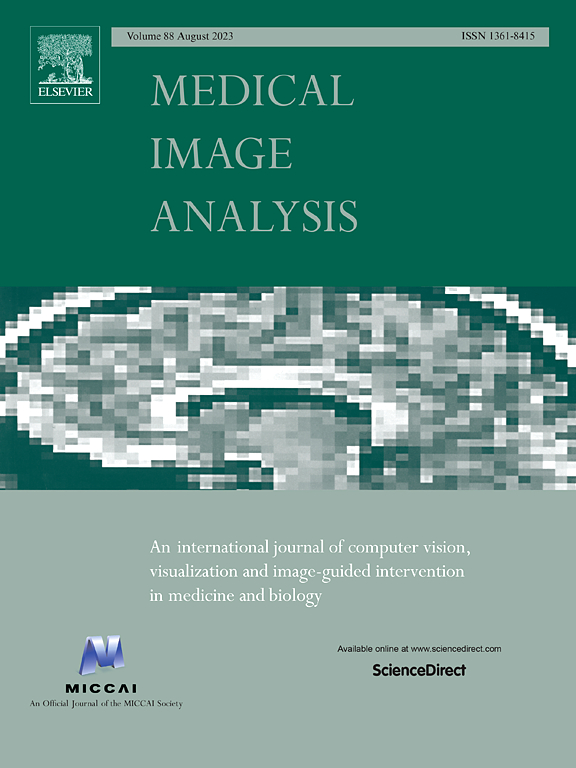ArtiDiffuser: A unified framework for artifact restoration and synthesis for histology images via counterfactual diffusion model
IF 10.7
1区 医学
Q1 COMPUTER SCIENCE, ARTIFICIAL INTELLIGENCE
引用次数: 0
Abstract
Artifacts in histology images pose challenges for accurate diagnosis with deep learning models, often leading to misinterpretations. Existing artifact restoration methods primarily rely on Generative Adversarial Networks (GANs), which approach the problem as image-to-image translation. However, those approaches are prone to mode collapse and can unexpectedly alter morphological features or staining styles. To address the issue, we propose ArtiDiffuser, a counterfactual diffusion model tailored to restore only artifact-distorted regions while preserving the integrity of the rest of the image. Additionally, we show an innovative perspective by addressing the misdiagnosis stemming from artifacts via artifact synthesis as data augmentation, and thereby leverage ArtiDiffuser to unify the artifact synthesis and the restoration capabilities. This synergy significantly surpasses the performance of conventional methods which separately handle artifact restoration or synthesis. We propose a Swin-Transformer denoising network backbone to capture both local and global attention, further enhanced with a class-guided Mixture of Experts (MoE) to process features related to specific artifact categories. Moreover, it utilizes adaptable class-specific tokens for enhanced feature discrimination and a mask-weighted loss function to specifically target and correct artifact-affected regions, thus addressing issues of data imbalance. In downstream applications, ArtiDiffuser employs a consistency regularization strategy that assures the model’s predictive accuracy is maintained across original and artifact-augmented images. We also contribute the first comprehensive histology dataset, comprising 723 annotated patches across various artifact categories, to facilitate further research. Evaluations on four distinct datasets for both restoration and synthesis demonstrate ArtiDiffuser’s effectiveness compared to GAN-based approaches, used for either pre-processing or augmentation. The code is available at https://github.com/wagnchogn/ArtiDiffuser.
求助全文
约1分钟内获得全文
求助全文
来源期刊

Medical image analysis
工程技术-工程:生物医学
CiteScore
22.10
自引率
6.40%
发文量
309
审稿时长
6.6 months
期刊介绍:
Medical Image Analysis serves as a platform for sharing new research findings in the realm of medical and biological image analysis, with a focus on applications of computer vision, virtual reality, and robotics to biomedical imaging challenges. The journal prioritizes the publication of high-quality, original papers contributing to the fundamental science of processing, analyzing, and utilizing medical and biological images. It welcomes approaches utilizing biomedical image datasets across all spatial scales, from molecular/cellular imaging to tissue/organ imaging.
 求助内容:
求助内容: 应助结果提醒方式:
应助结果提醒方式:


